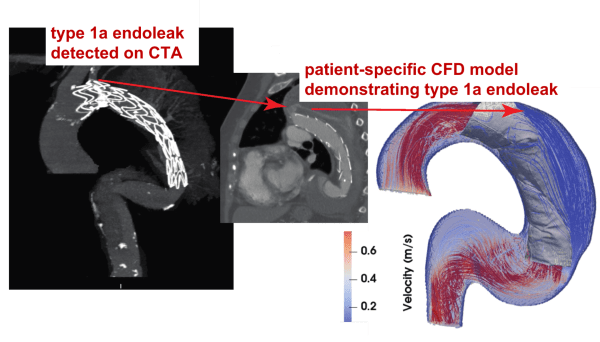Seal Zone Stability in Endovascular Repairs
Seal Zone Stability in Endovascular Repairs

- In traditional invasive open aortic surgery, a polymer tube graft is sutured to the aorta.
- In EVAR and TEVAR, the endograft and aorta are held together simply by adhesive forces over a short region of the repair called the seal zone.
- Seal zone failure can lead to endoleaks where blood flows in between the endograft and aorta.
- Endoleaks lead to repeat re-pressurization of the weakened aortic wall and increases the risk of aortic rupture and patient death.
Our hypothesis: geometric incompatibility dictates interfacial stability
- There is a competition between destabilizing displacement forces and loads acting on the endograft and stabilizing fixation forces.
- We apply fracture mechanics with a cohesive zone model for FEM to describe seal zone failure.
- Loss of seal correlates with the appearance of high stress in the aortic neck.
- The elasto-adhesive seal model balances the available elastic energy in the aortic neck with the interfacial energy.

